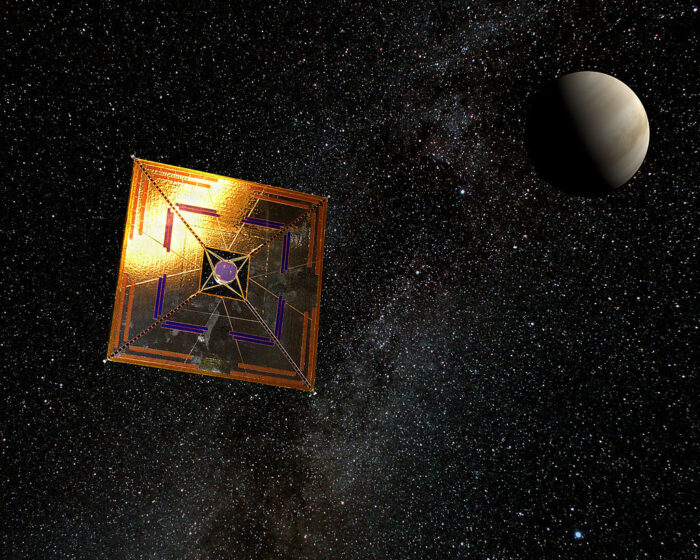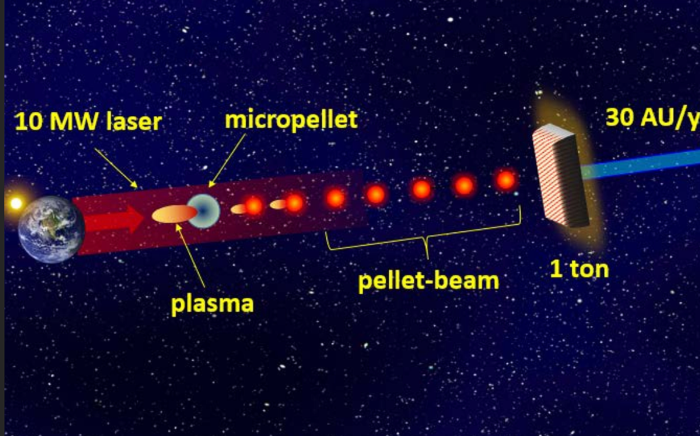Space travel is complicated. So so complicated.
When you sit and think about it, it truly is a miracle that humans have done as much of it as they have. The mathematics involved in successfully docking with the International Space Station alone are pretty staggering. After all, the ISS travels at a cool 7.6 km per second. And yet, we do that several times a year.
Look at us go!
But if we're being honest, the biggest obstacle to us living out all of our sci-fi space dreams is not the math involved in hooking up with satellites and planets moving at incredible speeds. We're amazing at that.
It's the mind-boggling distances between those objects.
Space travel takes forever. Even the fastest possible thing, light, would need over four years to reach Alpha Centauri, the nearest star to our own Sun. Meanwhile, some of the fastest spacecrafts we've ever built, Voyager 1 and 2, needed over 35 years of travel just to exit our solar system, or go interstellar. (Reaching Alpha Centauri would take it about 70,000 years.)
If only we could find a way to speed things up!
A new NASA propulsion project claims to be able to do just that. Called pellet-beam propulsion, it is one of a few new projects that is being developed. It claims that it could have a craft go interstellar in just five years.
And it looks quite unlike anything any space agency is using today!
Not rocket fuel

Space sail, or solar sail, concepts like the IKAROS satellite have potential for interstellar travel, but they are also only able to propel very small craft. (Wikimedia Commons)
Right now, we rely on things like rockets or ion thrusters to power our spacecraft. These use things like fuel or electricity to generate the thrust needed to get things moving. Once in space and in a vacuum, a fairly small ion thruster can actually get a craft really flying, especially if we use gravity to help slingshot it and add momentum. But there's still only so fast that it can go.
Over the last couple decades, some scientists have come up with ingenious plans to use lasers and solar radiation to super charge a 'space sail' with energy. Sort of like what a wind does to a sailboat, only much faster. One such example, Lightsail 2, has been launched successfully in Earth orbit. Ultimately, some experts think this kind of tech could go fast enough to send a probe to Alpha Centauri in about 20 years. That's a quarter of the speed of light!
The main drawback? The craft it could send would be tiny—smaller than a smartphone. We can't travel in that!
Pellet power
Enter the new pellet-beam concept. This NASA propulsion concept claims to work in a similar fashion to the space sail idea, but using 'pellets' rather than just lasers. And this would allow it to send objects as heavy as 1 ton at so-far unimaginable speeds.
In other words, human beings could leave our solar system comfortably within their own lifetime.
In this concept, the lasers supercharge a series of microscopic particles (the pellets), turning some of them into plasma (ionized gas, a fourth state of matter). The plasma and pellet mixture travels at about 120 km (75 miles) per second and slams into the craft, sending it flying through space. The outer planets could be reached in less than a year, and the craft would reach interstellar space in five years.
At least that's the theory. The technology is really just an idea on paper, but then again, that is how all of these things have started out, and look how far we've come!
Now, five years is still an incredible amount of time to spend inside a spacecraft. And that's just one part of the journey. It would be a daring mission for anyone to undertake. But if nothing else, it is a fascinating thing to imagine us getting one step closer to making the kinds of journeys our heroes in films and books do all the time!
 Zoom! Is this concept the future of space travel? NASA is giving it a shot. (Artur Davoyan/NASA)
Zoom! Is this concept the future of space travel? NASA is giving it a shot. (Artur Davoyan/NASA)









